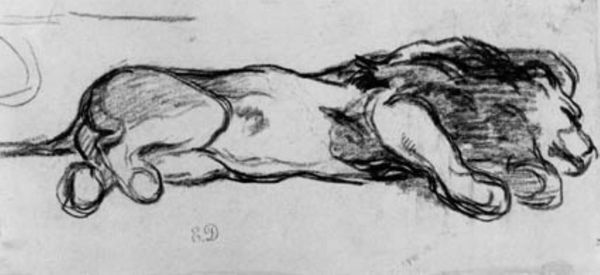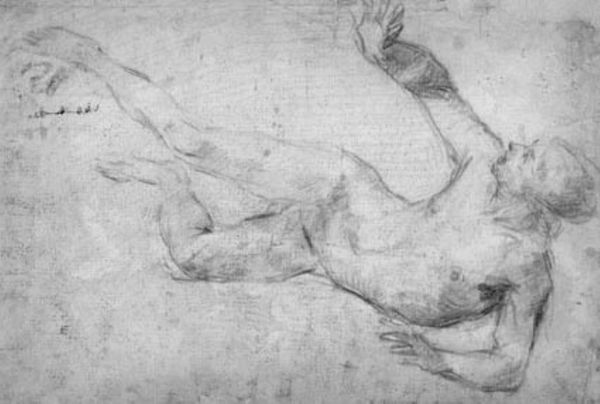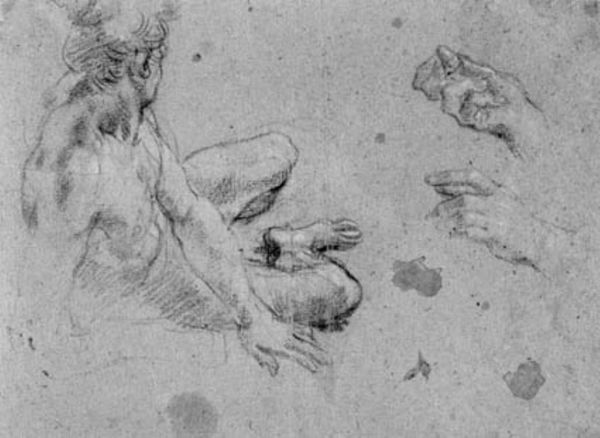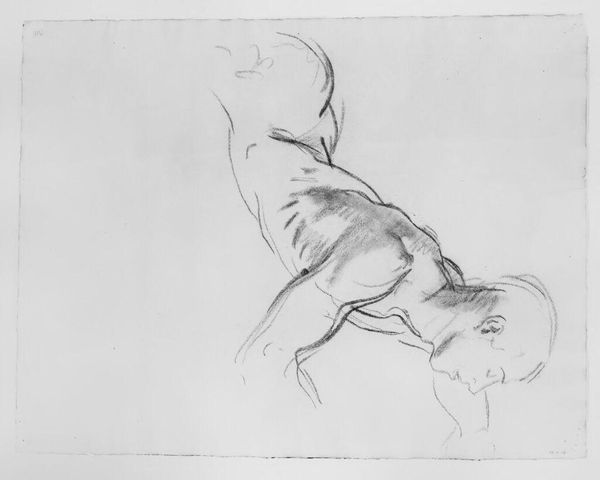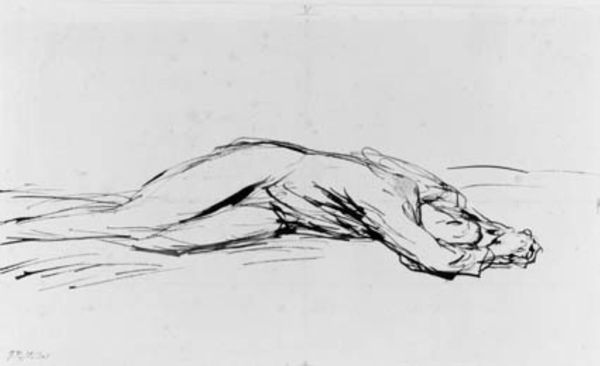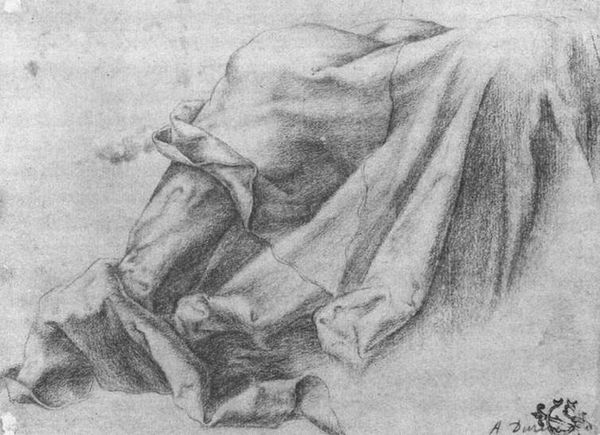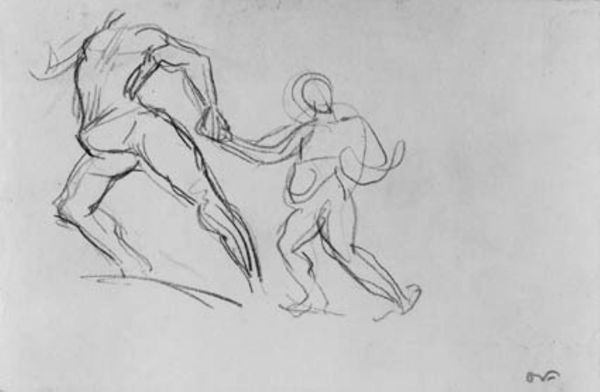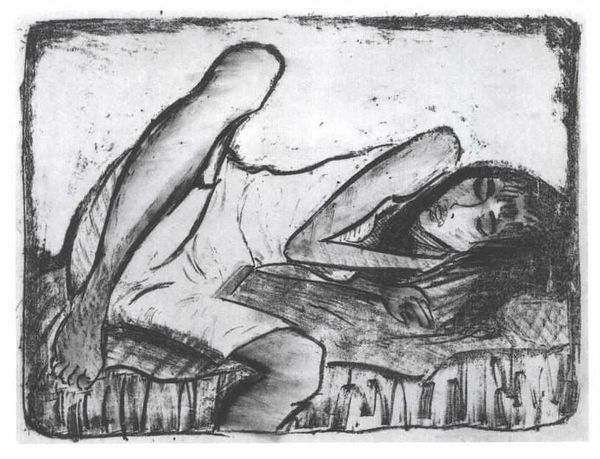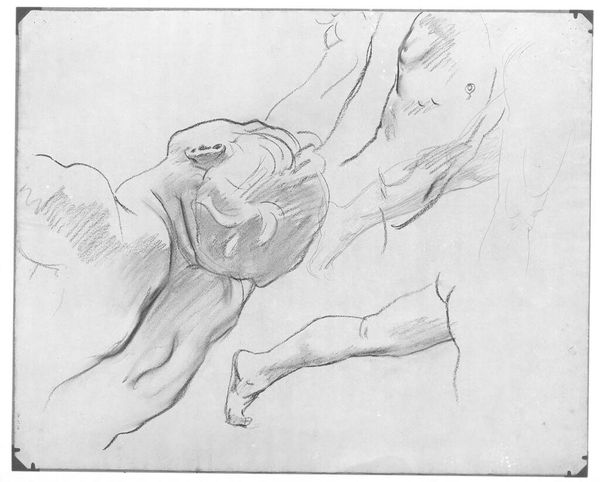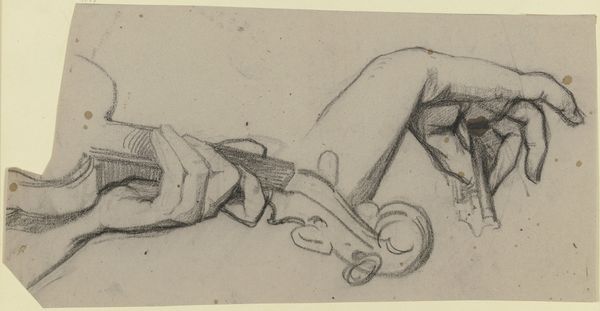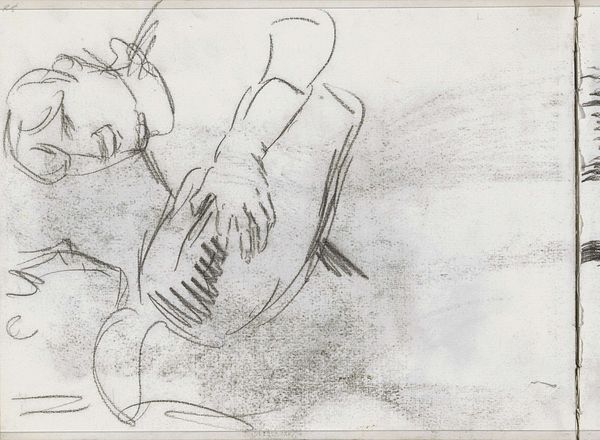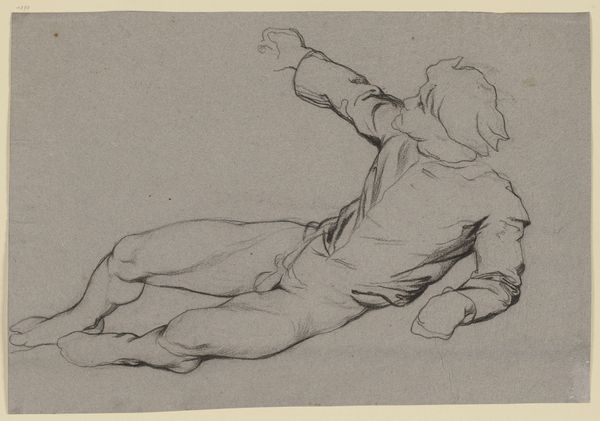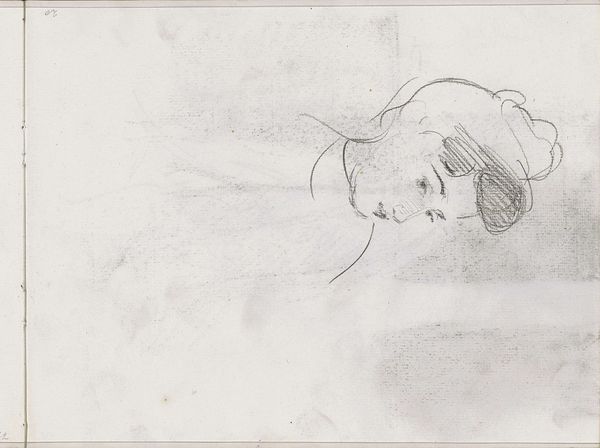
drawing, pencil, charcoal
#
portrait
#
pencil drawn
#
drawing
#
charcoal drawing
#
mannerism
#
charcoal art
#
pencil
#
charcoal
#
nude
Dimensions: 196 mm (height) x 380 mm (width) (bladmaal)
Curator: Here we have a work from SMK, the Statens Museum for Kunst. It’s entitled "Semi-recumbent male nude," and is attributed to Francesco Montelatici, likely dating from the period of 1601 to 1661. Editor: The raw quality of the drawing hits you immediately. It feels urgent and quite visceral. Curator: Yes, the medium itself—charcoal and pencil—lends a sense of immediacy. Note how Montelatici employs hatching and cross-hatching to define the figure’s musculature. The dynamism in the pose and the implied movement are remarkable. The way that the pose places emphasis on the strained reach of his limbs, conveys a sense of imbalance, wouldn't you agree? Editor: Precisely. Considering the era, one has to wonder about the availability and cost of materials, and the working conditions in Montelatici’s studio. These choices may reflect economic realities and a prioritization of efficient production. Charcoal is cheap. The swift hand of the artist across the cheap material. Is there something the artist needed to produce quickly for money? Curator: That's an intriguing angle. The composition adheres to certain Mannerist conventions, notably in the somewhat exaggerated pose. But observe the economy of line. Montelatici isn’t merely representing a nude form, he's articulating something about the human condition. There’s an undeniable tension, almost an anxiety, conveyed through the figure’s gesture and expression. Editor: And look at the stains. I wouldn’t simply dismiss these as accidental blemishes; rather they integrate themselves into the totality of the work, giving it depth, adding more to the materiality, rather than subtracting, suggesting the labor involved in the drawing’s production. There's something quite interesting to be said of their use by the artist as representational choices rather than imperfections. Curator: A compelling perspective! It reframes our understanding, inviting us to view these marks not as detractions but as integral layers. Well, considering Montelatici's handling of form and the expressive impact, there’s ample reason to ponder the intersections between aesthetic intent, material constraints, and historical context when viewing this. Editor: I am still struck by what this says about the use of inexpensive and easily acquired resources in creating the artwork as a form of necessity.
Comments
No comments
Be the first to comment and join the conversation on the ultimate creative platform.
